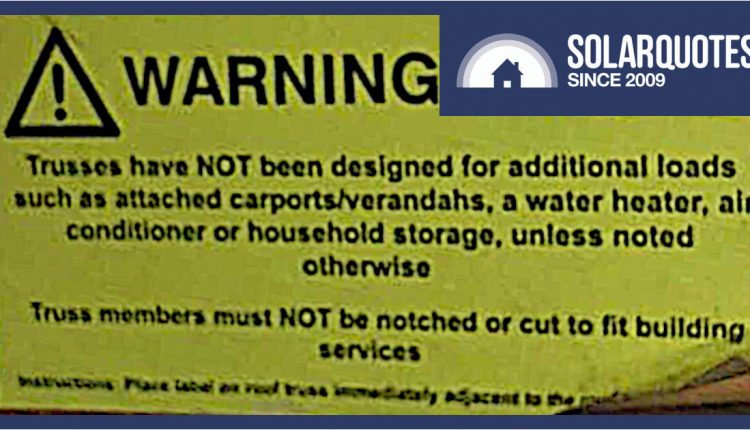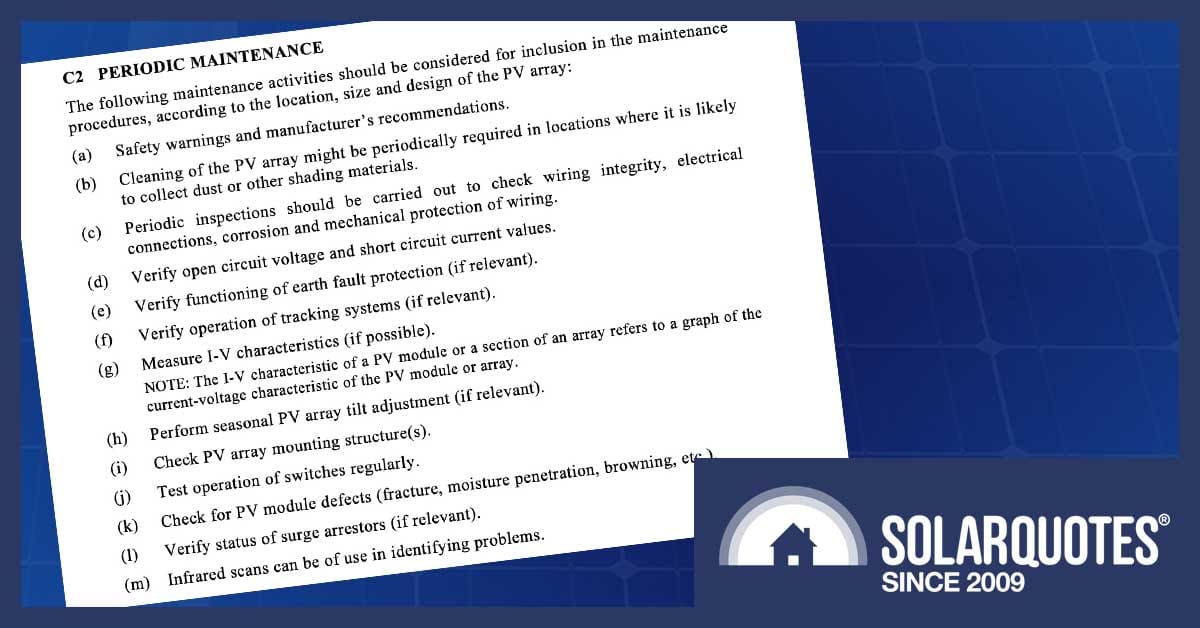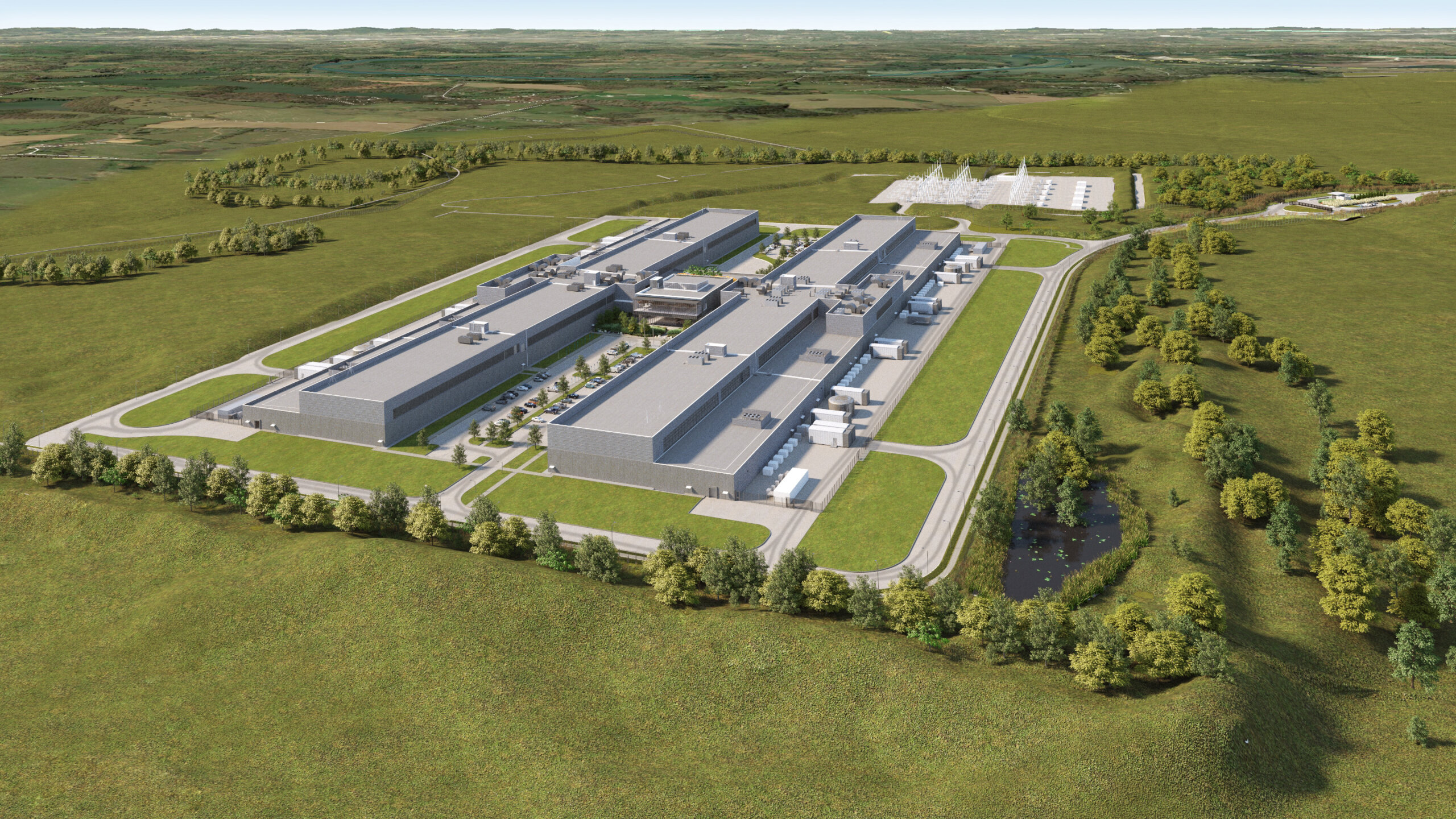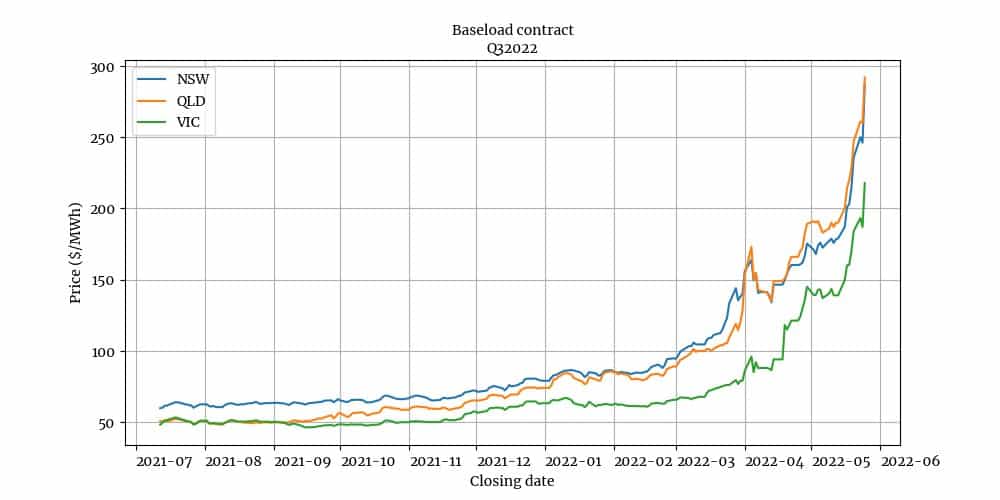Is Your Roof Strong Enough for Solar Panels?
Some roofs are more suited to solar panels than others. Recently, we fielded an inquiry from a customer who’d amassed a heap of solar power system quotes. One company made a noteworthy assertion.
The firm claimed it was legally necessary to have an engineer assess the roof to ensure it was strong enough support the extra weight of the solar panel array.
I don’t know who has enough time to organise, collect and collate 9 quotes…
Fear Tactics Or Due Diligence?
The customer was left with a lingering question: was this company using scare tactics, or were they genuinely concerned about safety? Perhaps they were ensuring every box was ticked, every calculation made. On the same subject : How to decide on a battery to your solar energy system.
This scenario highlights an industry-wide laxity towards details, which I have often observed in the building sector.
For a little context, in 2002 two women were sadly killed when a tile roof collapsed at a suburban golf club at West Lakes in Adelaide. After a coroners report and then further findings that things hadn’t improved by 2005, there was a wide ranging review of building standards and practices centred on the construction, transport, handling, erection and inspection of roof trusses.
I recall this as a cultural change because I qualified for a builders’ license shortly after the event. The entire building industry, especially the carpenters and roof framers, were given a dose of salts in the aftermath.
Engineering, handling and installation practices were all tightened up, and it became common knowledge that buildings weren’t designed to carry more than 2% extra load. Pergolas, air conditioners, and especially close coupled hot water services (500kg of water in a tank) were all required to have engineering and possibly reinforcement.
The specific website that hosted this information has vanished. Recent news articles indicate that council inspections still haven’t improved significantly, suggesting that the industry might have forgotten these vital lessons. Anecdotally, I can confirm this as fact. While you can still get a helpful guide on roof structure, the related website is gone, so it seems the Government has forgotten to renew the domain name, too.
Having personally installed a 100kg timber beam and props, (engineered to suit a hot water service), I can assure you the practicalities of retrofitting extra structure in a freshly finished house aren’t easy. It’s been nearly as difficult to find the booklet mentioned above.
This label, placed just above the access hole, is common in South Australian roof spaces.
Tile Roofs vs. Iron For Solar Panel Installation
I wouldn’t have a tile roof if you paid me, but the one saving grace is that there’s twice as much timber up there to support the weight of all that broken concrete. Arguably, 15 tons of tiles offers a lot more margin than a metal roof that weighs a much more sensible 1. This may interest you : LG Solar takes one other step forward with a 390 W NeON H panel.5 tons. It’s not all about dead weight, though.
The engineering isn’t about the array crushing the building, rather it’s actually about uplift. Nobody wants the solar panels, framing or indeed the whole roof torn off in storm conditions.
Size, Weight, And Structural Considerations Of Solar Panels
Ever since I can remember, solar PV systems have been said to weigh roughly 22kg per square metre. To see also : array. The biggest system I recall doing myself was 7 tons all up, but that’s a tale for another time.
Customers were routinely assured that an installer walking on the roof exerted greater pressure than the installed solar panels. As long as the panels were within 100mm of the roof and parallel to it, solar was within the 2% engineering margin allowed. In fact, the bespoke framing we used at Solar Depot made the building stronger, which was a comforting thought on some shaky old structures.
Solar Depot’s super stout framing was also very flexible to deploy. Not only was this old roof stronger, but it made this Tetris possible regardless of the screw lines.
It’s An Open Secret: Some Regulations Are Ignored.
If solar panel arrays are pitched at an angle to the roof, they require a qualified professional to examine and approve the design. Not only are the modules and frames inspected as well as the screws into the roof, but the building itself should also be checked, or its blueprints reviewed for strength. Lastly, what project would be complete without the local council reaching out for a planning approval fee?
Rest assured that historically speaking, in most cases, the solar industry duly ignores these regulations unless it is a particularly large and expensive installation on a commercial or public building.
Still, the only failures I ever heard about were when someone forgot to install all the hardware.
The Wind Of Change Has Swept Through
With the adoption of AS/NZS1120:2021.2, things have changed throughout Australia. When anything is built, it must comply with the new rules around wind actions. There are new zones, categories, cryptic formulas, and tighter rules. Climate change even rates a mention as a design multiplication factor written into the standard, which is equal parts reassuring and sobering.
With extreme weather becoming more common and seen in more regions in Australia, a Climate Change Multiplication Factor (Mc) has been introduced to replace the uncertainty factor for all regions.
Previously, the wind zones used to be roughly A) Australia, B) Brisvegas, C) Cyclonic, D) Diabolical:
There are many more wind zone colours now:
What To Ask For If Concerned About Roof Strength
- I would start with your insurance company because they should be notified when you have a significant new asset on the roof. Ask them what they cover in terms of storm damage. Does it include electrical surges and hail damage? Do they impose any special requirements for a solar power system to be covered; i.e., do they want engineering?
- Consider an Engineering Report. Depending on your risk tolerance, you might request your installer to include the cost of an engineering report in your solar system quote. If the company doesn’t have a trusted engineering firm on call, you might question whether they are diligent enough to do the job properly anyway?
- The bulk of solar companies simply rely on manufacturer installation standards. It shouldn’t cost anything extra if you ask the installer (before install day) for a copy of the instructions and their own assessment of what your place needs according to the wind zone, terrain category and occupancy. More importantly, in the age of 30mm thin panel frames, ask them to check the panel clamping zone listed in the manual.
- Ask for a landscape solar panel installation. In broad terms, rails placed vertically will be more adjustable to suit panels laid sideways, plus they have more fixings to make it solid. So, if you’re worried about roof strength, asking for landscape arrays is a simple way to specify a sturdy job.
- Your installer is ultimately responsible for judging what is needed to attach a solar array to your roof safely, but an expert opinion can’t hurt: The car club I have attended for 35 years recently had a quote for a solar PV system on their circa 1925 meeting hall. I organised it for them and as part of the process, the council owned building was checked and found to be termite damaged. It was promptly demolished on public safety grounds.






Comments are closed.